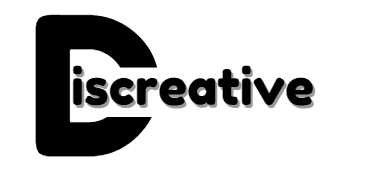Introduction
The world of software development is continuously evolving, with demands for higher-quality software, faster time-to-market, and adaptability to changing requirements. In this dynamic environment, developers face the challenge of delivering software that is not only functional but also maintainable, scalable, and efficient.
“Codecraft: Agile Strategies for Crafting Exemplary Software” is a modern approach to software development that blends agile methodologies with a craftsmanship mindset. This hybrid approach emphasizes creating high-quality code while maintaining the flexibility to adapt to new requirements.
In this article, we will delve deep into the core principles of Codecraft, explain its key strategies, and illustrate how it can elevate the quality of software projects. Additionally, we will explore the challenges involved in implementing Codecraft and why it has become a popular choice for software development teams.
Understanding Codecraft
What is Codecraft?
At its core, Codecraft represents a convergence of agile methodologies and software craftsmanship. It emphasizes that software development is both a technical and creative process, requiring a commitment to excellence, attention to detail, and continuous improvement. Codecraft prioritizes writing clean, maintainable, and scalable code while keeping an iterative development mindset, which is essential in agile environments.
Software craftsmanship focuses on producing high-quality software by following well-established coding principles and best practices. In contrast, agile methodologies focus on iterative development, frequent feedback, and adaptability. By integrating these two philosophies, Codecraft delivers an approach that balances speed, efficiency, and quality.
Key Principles of Codecraft
Codecraft revolves around several core principles, each contributing to a robust and efficient software development process.
1. Agile Methodologies
Agile methodologies, such as Scrum, Kanban, and Lean, serve as the backbone of Codecraft. Agile emphasizes iterative development, where large tasks are broken down into smaller, manageable chunks. These smaller tasks are then completed in short development cycles, known as “sprints.” Agile methodologies promote adaptability, collaboration, and continuous feedback, enabling teams to quickly respond to changing requirements.
Scrum, for instance, uses time-boxed iterations called sprints, with a focus on delivering potentially shippable software increments at the end of each sprint. Kanban, on the other hand, focuses on visualizing workflows and limiting work in progress to optimize flow. Codecraft encourages adopting the agile methodology that best fits the team’s needs.
2. Software Craftsmanship
Software craftsmanship emphasizes quality, sustainability, and continuous improvement in the development process. Developers adhering to this philosophy aim to write code that is not only functional but also clean, modular, and easy to maintain. Code should follow established best practices like the SOLID principles, which include:
- Single Responsibility Principle (SRP): A class should have one and only one reason to change, meaning it should only have one job.
- Open/Closed Principle (OCP): Software entities should be open for extension but closed for modification.
- Liskov Substitution Principle (LSP): Objects of a superclass should be replaceable with objects of a subclass without affecting the correctness of the program.
- Interface Segregation Principle (ISP): Clients should not be forced to depend on interfaces they do not use.
- Dependency Inversion Principle (DIP): High-level modules should not depend on low-level modules. Both should depend on abstractions.
Following these principles ensures that code is easily extendable and maintainable, reducing technical debt and increasing the longevity of the software.
3. Continuous Integration and Continuous Delivery (CI/CD)
One of the key pillars of Codecraft is the integration of Continuous Integration (CI) and Continuous Delivery (CD). CI ensures that every code commit made by developers is automatically tested and merged into the main codebase. This reduces the chances of integration issues and allows for quicker identification of bugs.
CD extends CI by automating the release process. Once the code is integrated, it is automatically deployed to a staging or production environment. This ensures that new features or bug fixes reach end-users more quickly and with fewer errors.
4. Test-Driven Development (TDD)
Test-Driven Development (TDD) is another crucial component of Codecraft. TDD is an iterative development process where developers write tests for a specific piece of functionality before writing the code that implements that functionality.
The TDD process follows three main steps, often referred to as the Red-Green-Refactor cycle:
- Red: Write a test that fails (since the functionality does not yet exist).
- Green: Write just enough code to make the test pass.
- Refactor: Clean up the code while ensuring that the test still passes.
TDD encourages developers to write modular, loosely coupled code since tests need to be small and focused. It also helps catch bugs early in the development process, reducing the cost of fixing defects later.
5. Refactoring
Refactoring is the process of restructuring existing code without changing its external behavior. In Codecraft, refactoring is not seen as a one-time activity but as a continuous process throughout the development cycle. Regular refactoring keeps the codebase clean, improves readability, reduces complexity, and prevents the buildup of technical debt.
The goal of refactoring is to make the code more efficient and maintainable without introducing new bugs. Practices like extracting methods, renaming variables for clarity, and breaking down large classes into smaller ones are common in refactoring.
6. Collaboration and Communication
Codecraft places a high value on team collaboration and communication. Agile methodologies encourage open communication between team members, stakeholders, and customers to ensure that the software being developed aligns with user needs.
Regular team meetings such as daily stand-ups, sprint reviews, and retrospectives promote transparency, accountability, and a shared understanding of project goals.
Codecraft Strategies for Crafting Exemplary Software
Below is a breakdown of the key strategies that developers and teams can adopt under the Codecraft framework.
| Strategy | Description | Benefits |
| Iterative Development | Breaks down the project into smaller tasks and completes them in cycles (sprints). | Ensures adaptability, frequent feedback, and manageable workloads. |
| Code Reviews | Involves peer reviews of the code to ensure it meets quality standards and is free of bugs. | Catches errors early, fosters knowledge sharing, and improves overall code quality. |
| Pair Programming | Two developers work together on the same code, taking turns writing and reviewing. | Encourages collaboration, produces better design decisions, and reduces defects. |
| Automated Testing | Writing tests that automatically run as part of the CI/CD pipeline. | Increases code reliability, reduces manual testing, and catches issues early. |
| Modular Design | Software components are designed in small, self-contained modules. | Enhances scalability, maintainability, and code reuse. |
| Frequent Refactoring | Continuously improving the code structure without altering its external behavior. | Keeps the code clean, reduces complexity, and improves future maintainability. |
Iterative Development
In Codecraft, the iterative development strategy is critical for ensuring the agility and flexibility of the software project. The project is broken down into smaller, more manageable tasks, which are then completed in cycles known as sprints (usually 2-4 weeks in length). Each sprint results in a potentially shippable product increment, enabling regular feedback from stakeholders and customers.
This approach ensures that the software can be continuously improved based on real-world use cases and changing requirements. Additionally, iterative development encourages rapid prototyping, allowing teams to experiment and find the best solutions before committing to a particular direction.
Code Reviews
Code reviews are a powerful tool in the Codecraft approach. Code reviews involve having other developers review the code before it is merged into the main codebase. This practice helps ensure that the code adheres to established standards and is free of obvious bugs.
Not only does this improve the quality of the code, but it also fosters a culture of collaboration and knowledge sharing within the development team. It allows developers to learn from one another and ensures that everyone is working toward the same high standards.
Pair Programming
Pair programming is another collaborative strategy widely used in Codecraft. In pair programming, two developers work together on the same task, with one writing the code while the other reviews it in real time. This approach helps solve complex problems faster, leads to better design decisions, and reduces the likelihood of introducing bugs into the codebase.
While some may see pair programming as a time-intensive process, the benefits often outweigh the initial time investment. It enhances communication, produces cleaner code, and creates a shared understanding of the codebase across the team.
Automated Testing
One of the key pillars of Codecraft is automated testing. Automated tests, such as unit tests, integration tests, and end-to-end tests, are written to ensure that the code functions as expected. These tests are run automatically as part of the CI/CD pipeline, which means that developers can catch bugs early in the development process.
By automating the testing process, teams can avoid the pitfalls of manual testing, which is often time-consuming and prone to human error. Automated tests are reliable, consistent, and scalable, ensuring that the codebase remains stable even as the project grows in complexity.
Modular Design
Modular design involves breaking down the software into small, self-contained modules that can be developed, tested, and deployed independently. This approach enhances scalability, as individual modules can be updated or replaced without affecting the entire system.
Modular design also encourages code reuse, as the same modules can be used across different projects. Additionally, by keeping modules small and focused, the code becomes easier to maintain and extend over time.
Frequent Refactoring
As mentioned earlier, refactoring is a continuous process in Codecraft. By regularly improving the structure and clarity of the code, developers can ensure that the codebase remains clean and easy to work with. Frequent refactoring also reduces technical debt, preventing the code from becoming overly complex or difficult to maintain.
Benefits of Adopting Codecraft
The Codecraft approach offers numerous benefits to software development teams and organizations:
1. Higher Code Quality
By following clean code principles, engaging in regular code reviews, and implementing automated testing, Codecraft leads to higher-quality software. Developers produce code that is less prone to bugs, easier to maintain, and more reliable.
2. Faster Time to Market
Codecraft’s agile foundation allows for faster delivery of features and improvements. Iterative development, combined with CI/CD pipelines, ensures that teams can release new updates more frequently, reducing the time to market.
3. Improved Collaboration and Communication
Codecraft encourages collaboration through pair programming, code reviews, and open communication channels. This leads to a stronger sense of teamwork and a shared understanding of project goals. It also ensures that everyone is on the same page, reducing misunderstandings and bottlenecks.
4. Reduced Technical Debt
By emphasizing frequent refactoring and following best practices such as the SOLID principles, Codecraft helps teams reduce technical debt. This results in a cleaner codebase that is easier to maintain and extend, which is crucial for the long-term success of a project.
5. Adaptability to Change
One of the core strengths of Codecraft is its flexibility. Agile methodologies allow teams to quickly respond to changing requirements or market conditions. Whether it’s adjusting priorities or implementing new features, Codecraft ensures that teams can pivot without losing momentum.
Challenges in Implementing Codecraft
While Codecraft offers significant benefits, it is not without challenges. Implementing Codecraft within a development team requires a shift in mindset, skills, and culture. Below are some of the key challenges associated with adopting Codecraft:
1. Cultural Shift
Implementing Codecraft may require a significant cultural shift within the development team. Traditional development teams may be more accustomed to a “waterfall” approach, where tasks are completed in a linear fashion, with less emphasis on collaboration and feedback. Transitioning to Codecraft means embracing a more dynamic and collaborative environment, where feedback loops, frequent testing, and continuous improvement are the norm.
2. Time Investment
Practices such as TDD, pair programming, and frequent refactoring can initially take more time than traditional development approaches. This is especially true for teams that are new to these practices. However, the long-term benefits of Codecraft — such as higher code quality, reduced defects, and faster delivery cycles — often outweigh the upfront time investment.
3. Need for Skilled Developers
Codecraft requires developers with a deep understanding of agile methodologies, software craftsmanship principles, and automated testing techniques. Teams may need to invest in training and mentorship to ensure that all members have the necessary skills to successfully implement Codecraft.
4. Balancing Speed and Quality
One of the challenges of Codecraft is striking the right balance between speed and quality. While the emphasis on clean code, refactoring, and testing can improve code quality, teams must be careful not to sacrifice speed in the pursuit of perfection. Agile methodologies encourage delivering functional software quickly, but developers must also ensure that the code remains maintainable and scalable.
Conclusion
“Codecraft: Agile Strategies for Crafting Exemplary Software” represents a holistic approach to software development that balances agility, quality, and maintainability. By integrating agile methodologies with the principles of software craftsmanship, Codecraft empowers development teams to create high-quality, scalable software that can adapt to changing requirements and market conditions.
Codecraft is more than just a collection of techniques; it is a mindset that values continuous improvement, collaboration, and the pursuit of excellence in every line of code. Teams that adopt Codecraft can expect to see higher code quality, improved collaboration, and faster time to market, all while reducing technical debt and ensuring long-term project success.
Also, read more about: Tom Oar Obituary: A Tribute to a Mountain Man




